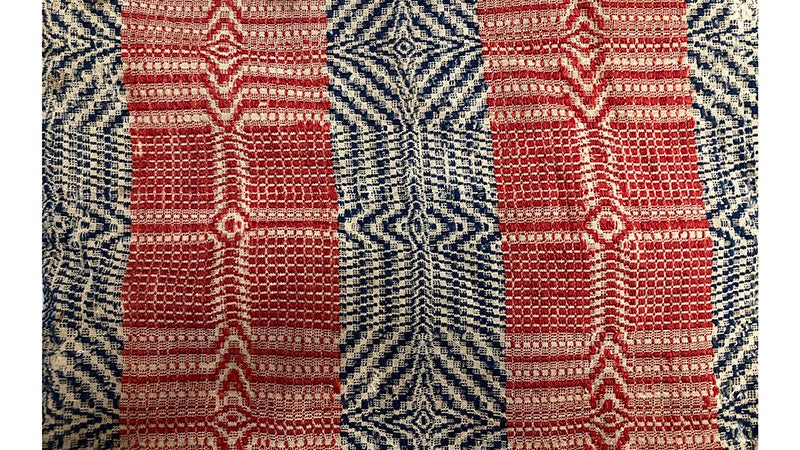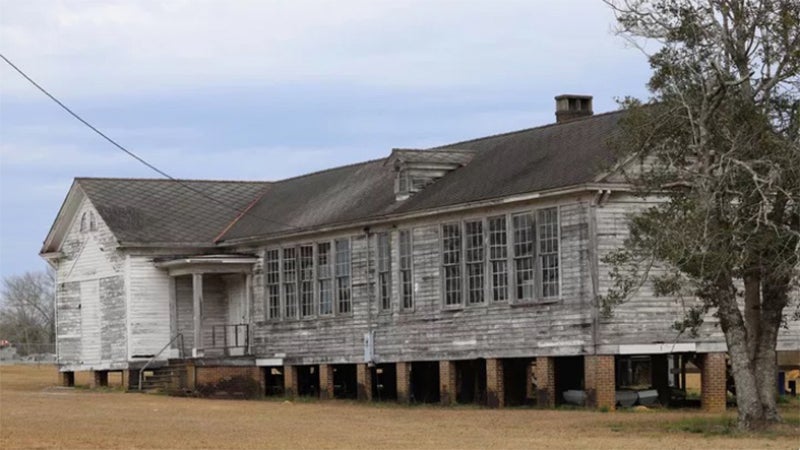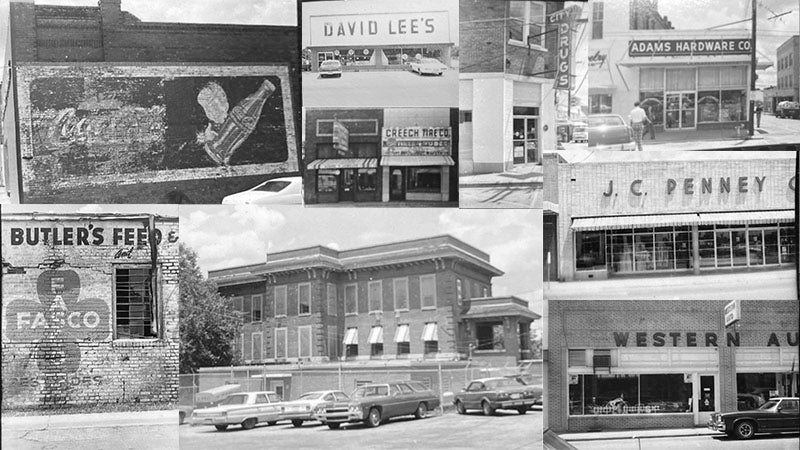Remember when: Teens liked Square in ‘40s
Published 1:30 am Saturday, April 22, 2017
This hit song written and made popular in the mid to late 1940s “To Each His Own” lingered in popularity into the 1960s. I remember that unforgettable melody with romantic words being a favorite of one of my favorite young teachers at AHS, Coach Bill Ward. He was always encouraging our choral ensemble to learn and sing it with lots of harmony. He eventually wooed his girl, Miss Nita Andress, with the tune, and she became Mrs. Ward!
“A rose must remain with the sun and the rain, Or its lovely promise won’t come true. To each his own, to each his own, And my own is you…Two lips must insist on two more to be kissed, Or they’ll never know what love can do. To each his own, I’ve found my own, One and only you.”
With the help of writers of local history, Dr. Bill Hansford and Kristy Shuford White, along with Diana Pelham Bledsoe, here is an account of the Pelham Drug Company, the Walgreen Agency that operated a business on the Court Square in the Prestwood Building. Purchased from the Ham Drug Company in the late 1940s, Charles Alonza Pelham’s soda fountain was not only one of the favorite places for the downtown business folk to enjoy their morning and afternoon coffee breaks but also the place to be for the teenagers hanging out after school, on Saturdays, and after the Sunday matinee at the Martin Theatre. Cherry cokes, square cheese crackers, thick malts, and spiced ham sandwiches were just a few of the orders placed by the young customers back in the “doo wop” days!
Red upholstered stools at the fountain and booths to the rear of the soda fountain welcomed the crowds of students who flocked in regularly for a treat. The Wurlitzer juke box in the back was always busy spinning the current hits of the day.
“So many young folks worked there in their teens, probably a first job for most of them,” stated Diana Pelham Bledsoe. “My sister, Caroline, and my brother Charlie both worked there while they were in high school. “
Other young people Diana remembered being employed at the drug store are Morris Holland, June Griggs, Doyle Cassady, Jeannie Sowell, Janice Shiver, and Roy Chisum.
“Lucille Straughn was a full-time employee for a long time as was a Mr. Hill and a Mr. Church who ran errands, deliveries, and cooked a lot of the hamburgers back in the kitchen.”
Some of the pharmacists were Mr. Coston, Cap’n Broughton, Mr. McEachin, and Mr. Moody who later owned and operated Moody Drugs in Florala. Bledsoe apologized at not remembering and attempting to come up with some of the first names.
“It was so long ago and I was young then, too. When my dad’s health became very bad, my mother Elizabeth Robertson Pelham had to carry on. My brother reminded me recently that the business, the popular gathering place where teenagers bopped and jitterbugged to the jukebox tunes, closed at the end of the year 1964.”
“The Cotton Patch florist operated by Steve and Linda Dubose occupied that southwest corner storefront after some time. They used the shelves and mirror for displays that were a part of the soda fountain. I don’t know what happened to the soda fountain counter and equipment. It is somewhere!”
“Being the hub of the town square’s business activity, downtown was always a busy place six days a week. Cagle Jewelers, owned by Curtis Cagle, and Watson’s clothing store occupied the first floor of the stately Prestwood Building along with the drug store.”
“Walking up the wide staircase, occupying the second floor was Moulton’s Studio owned by Cliff and Pearl Moulton, the office of Dr. John H. Estep, Attorney Fletcher Jones, and Attorney James M. Prestwood. Seems like there was also an insurance company on the second floor (Ed Reid and Company, Insurance Adjustor). There were possibly others. After Cagle Jewelers closed (I believe he moved to Auburn.), James M. Prestwood moved his office downstairs adjacent to the drug store and was there for several years as downtown continued to flourish.”
“My dad (Charles Alonza Pelham) was born in 1910, and he passed away in 1973. My mom Elizabeth taught school in the county system at Carolina, Straughn, and Red Level before she helped keep the drug store open when dad took ill. She later worked for DHR for 15 years. Their four children were Caroline, Diana, Charlie, and Al, all graduates of Andalusia High School. Charlie, an Auburn graduate, is still a pharmacist today.”
Alonzo L. Pelham, the grandfather of Charles Alonza Pelham, lived on South Cotton Street, in a charming 1880s cottage on the corner of West Watson. The property had an extra lot beside it that the family always referred to as “the lawn” which was used by all of the neighborhood children as their playground. The Queen Anne style home featured millwork in different colors. Homes of this period were often referred to as “painted ladies.” A photo of this house still exists, one of the treasures of old photos, property of the family and now the historical society collection.
The home was later purchased by Alonzo’s grandson-in-law, Dr. Lester O’Neal, who married Louise Pelham, sister of Charles Alonza Pelham. Tragically Dr. O’Neal was killed early on during World War II. Louise continued to live there with her daughter Tillie until which time Louise built a home on Sanford Road. After Louise moved from the home, her mother, Nora Pelham, widow of Charles Warren Pelham, moved into the home. At her death, Charles and Elizabeth moved in. Louise later married Buck Taylor and daughter Tillie O’Neal married William Hamiter.
Sometime prior to 1896, Alonzo L. Pelham built the Regency style three-story building on the corner of Pear Street and South Cotton. Pelham owned rental property and a grocery store on the South Cotton Street side of the building. Also on that side was McGraw Barber Shop, Drew Shoe Shop, and Dickerson Gun Store. The front area of the building was the T. L. Campbell Drug Store. Later occupying the front portion was Thagard Drug Store and later the Mallette Drug Company when O. L. Thagard took in his pharmacist partner Aubrey Mallette. Other tenants in the upstairs offices included Dr. Louis Edward Broughton, Dr. Henry Elton Battle, Dr. C. W. Wood, Dr. Henry Robert Middleton, D. D. S., and Mr. Moon, the photographer who went on to great fame in these parts.
This, by the way, is the historic building that was razed by the City of Andalusia in 2016, another National Register of Historic Places property that was officially listed among the 64 structures in the Andalusia Commercial Historic District in 1989.
In conclusion, some of you old timers (Hey, is that me now?) will remember this particular drug store story. When I ride by The Sonic in the afternoon and see this new generation of teenagers sitting around the round tables after school socializing and eating their snacks, I acknowledge that they will have their stories to tell one day although that is far from their minds right now. Here’s what one might hear today!
“Did you see her post on Facebook? Did you like those new reclining seats at the movie? Did you know that she got chosen for the LBWCC Ensemble? Don’t know how many more wild parties that bunch can have before graduation! My parents had better add some money to my debit card! Who did you vote for on ‘The Voice’ the other night?”
“Yes’n” as Bob Dylan sang back in my day (and I am surely lost in the 60s!), “The Times, They are a-changin’!” We are surely blessed to be able to REMEMBER WHEN! “Old times there are not forgotten!” Corrections and additions are always welcome!






